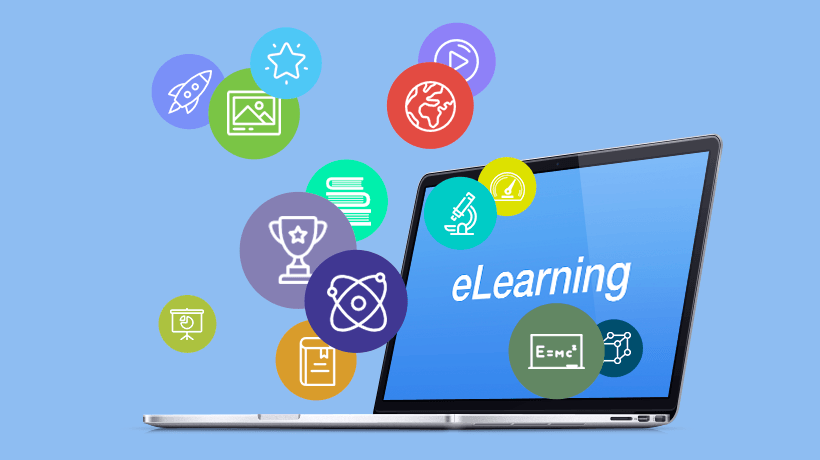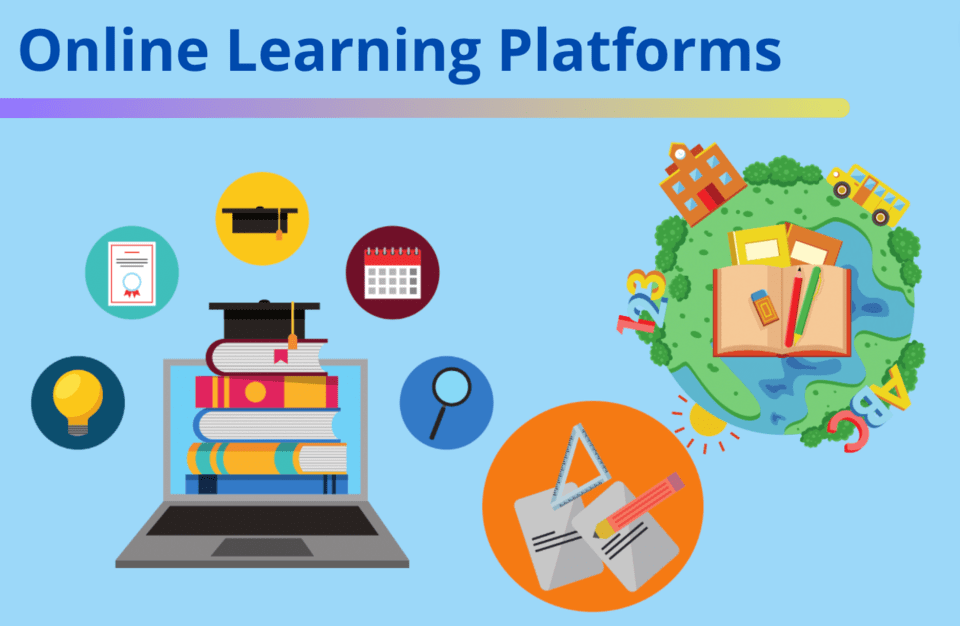As the world continues to embrace digital transformation, education is no exception. The rapid rise of online learning platforms has transformed how students access educational resources, engage with content, and interact with teachers and peers. Behind the scenes, a powerful tool—data analytics—is playing an increasingly important role in improving online learning management (OLM). By harnessing the power of data, educators and administrators can make informed decisions that enhance the overall learning experience, boost student performance, and optimize course delivery.
This is where data analytics plays a pivotal role. Data analytics refers to the process of collecting, analyzing, and interpreting vast amounts of data to gain valuable insights that can drive improvements in various sectors, including education. In online learning management, data analytics provides educators, administrators, and students with the tools they need to enhance learning outcomes, optimize course design, and improve overall engagement and participation. By harnessing the power of data, educational institutions can make more informed decisions that lead to better performance, higher retention rates, and a more personalized learning experience for every student.
Key Takeaways
- Personalization through Data: Data analytics enables personalized learning experiences by tracking individual progress and adjusting content based on each student’s needs and abilities.
- Real-Time Feedback for Improved Performance: Data analytics provides immediate feedback to students, helping them identify strengths and areas for improvement, which fosters self-regulation and better learning outcomes.
- Predictive Capabilities for Early Intervention: By analyzing student behavior and performance, data analytics helps predict potential challenges, allowing instructors to intervene early and offer targeted support.
- Data-Driven Course Optimization: Through the analysis of engagement metrics and student performance, educators can continuously optimize course design and delivery to enhance learning experiences.
- Enhanced Student Retention: Data analytics enables the identification of at-risk students and facilitates timely interventions, ultimately improving student retention rates in online courses.
Understanding Data Analytics in Online Learning Management

Data analytics in the context of online learning management refers to the process of collecting, analyzing, and interpreting student data to improve the quality of education. This data can include student performance metrics, engagement levels, completion rates, and various other behavioral insights. Learning Management Systems (LMS) and online education platforms collect large amounts of data from students as they interact with content, complete assignments, and communicate with instructors. By analyzing this data, educators and administrators can identify trends, strengths, weaknesses, and areas for improvement.
The integration of data analytics into online learning management systems enables the creation of personalized learning paths, provides real-time feedback to students, and allows for more effective tracking of learner progress. It also empowers instructors to tailor lessons based on student needs, ensuring that each learner receives the support they require to succeed.
The Role of Data Analytics in Enhancing Online Learning Management
1. Personalizing Learning Experiences
One of the most significant advantages of incorporating data analytics into online learning management is the ability to personalize learning experiences. Every student has a unique learning style, pace, and set of strengths and weaknesses. Data analytics can track each learner’s progress, engagement, and performance, allowing educators to customize course content to meet individual needs.
For example, data analytics can help identify students who are struggling with specific topics, enabling instructors to provide additional resources, remedial lessons, or one-on-one support. On the flip side, students who excel in certain areas can be given more advanced materials or opportunities for enrichment. This personalized approach enhances student engagement, motivation, and performance, ultimately leading to better learning outcomes.
2. Improving Student Retention Rates
Student retention is a common challenge in online education, as students may disengage from the material, fall behind in coursework, or lose motivation. Data analytics plays a critical role in identifying students who are at risk of dropping out or failing. By monitoring factors such as login frequency, participation in discussions, and completion of assignments, LMS can flag students who show signs of disengagement.
Early identification of at-risk students allows for timely intervention. For example, if a student has not logged into the platform for a certain period, instructors or academic advisors can reach out to offer support or guidance. Personalized outreach can help re-engage students and improve retention rates, ensuring that they stay on track and successfully complete their courses.
3. Providing Real-Time Feedback
Real-time feedback is essential for student success in any educational setting, and it becomes even more important in online learning environments where students may not have immediate access to instructors. Data analytics enables the automation of feedback by tracking student progress and performance in real time. For example, quizzes, assignments, and discussions can be automatically graded, with instant feedback provided to students on their strengths and areas for improvement.
This immediate feedback helps students to understand where they need to focus their efforts and adjust their learning strategies accordingly. It also promotes self-regulation, as students can monitor their own progress and take action when needed. Furthermore, instructors can use data analytics to identify common misconceptions or challenges faced by the class, allowing them to address these issues in future lessons.
4. Optimizing Course Design and Delivery
Data analytics provides valuable insights into how students are interacting with course content. By analyzing metrics such as time spent on each module, completion rates for individual assignments, and patterns of engagement with various materials, educators can gain insights into which elements of the course are effective and which ones need improvement.
For example, if a particular lesson or activity has a low completion rate or high dropout rate, it may indicate that the material is too difficult, too easy, or not engaging enough. With this data, educators can refine the course design to make it more effective. Whether it’s simplifying instructions, adding more interactive elements, or adjusting the pacing of lessons, data-driven insights ensure that the course content is continuously optimized for better learning outcomes.
5. Tracking Long-Term Progress and Performance
In online learning, students’ progress is often tracked over an extended period of time. Data analytics helps in monitoring long-term academic performance, enabling educators to assess whether students are meeting learning objectives, achieving milestones, and demonstrating mastery of the material.
By analyzing historical data, instructors and administrators can track trends in student performance across multiple courses or terms. This longitudinal analysis allows for a deeper understanding of how students learn, which strategies are most effective, and where improvements can be made. Furthermore, it helps identify patterns of improvement or decline, enabling early intervention when necessary.
6. Enhancing Collaboration and Peer Learning

Collaboration and peer learning are essential components of the educational experience, even in online learning environments. Data analytics can track collaborative interactions between students, such as participation in group discussions, joint assignments, and peer reviews. By analyzing these interactions, instructors can identify students who are particularly effective in collaborative settings and provide opportunities for them to take on leadership roles within group projects.
Additionally, peer learning can be enhanced by identifying students with complementary skills who can collaborate on assignments or study together. Data-driven insights into student behavior and engagement can also inform the development of group dynamics, ensuring that students work well together and support each other’s learning.
7. Predicting Learning Outcomes and Improving Accountability
Data analytics in online learning management also plays a critical role in predicting student outcomes. By analyzing historical performance data, instructors and administrators can make data-informed predictions about which students are likely to succeed or struggle in a given course. This predictive modeling helps to allocate resources more effectively and allows for targeted interventions when students are at risk of underperforming.
Additionally, data analytics fosters greater accountability. Both students and instructors benefit from tracking performance and progress over time. Students can hold themselves accountable for their learning, while instructors can assess whether their teaching methods and course content are meeting the desired outcomes. This level of accountability ensures that the learning process remains transparent and goal-oriented.
The Expanding Role of Data Analytics in Online Learning Management
Data analytics in online learning management is not only a tool for monitoring student progress but also a driver for innovation in educational methodologies. As the use of technology in education grows, the demand for sophisticated, data-driven approaches to managing and improving learning environments is increasing. By tapping into the power of analytics, online learning platforms can drive continuous improvements across multiple facets of the learning experience.
In addition to the roles mentioned earlier, data analytics has the capacity to reshape other critical elements of the education process. The following sections explore some of these emerging areas where data analytics is making a significant impact.
1. Enhanced Teacher Professional Development
One of the often-overlooked benefits of data analytics in online learning management is its potential to support teacher professional development. Just as analytics help identify trends in student performance, they can also provide valuable insights into an instructor’s effectiveness.
By tracking how students interact with different instructors, the system can highlight which teaching strategies are most successful. For example, if students consistently perform better after a particular type of instructional video or method of interaction, this can be flagged, encouraging educators to adopt similar practices. Teachers themselves can also receive feedback on their teaching effectiveness, which can be used for continuous improvement and professional growth.
Data-driven insights allow educators to adapt to their students’ evolving needs and refine their teaching methods over time.
2. Curriculum Improvement Through Data Trends
Curriculum development and refinement can be enhanced by continuously analyzing the performance data collected from online learning management systems. For example, if certain concepts or topics consistently pose difficulties for students across various courses, this could indicate the need for a curriculum adjustment.
Curriculum developers can use insights from student data to introduce new content, adjust the level of difficulty, or even change the sequencing of lessons. By making data-driven curriculum decisions, educators can ensure that learning materials remain relevant, challenging, and engaging for students, while still aligning with the course’s learning objectives.
This ability to adapt curriculum based on real-time performance data also ensures that students are consistently presented with materials that are appropriately challenging, promoting engagement and reducing frustration or boredom.
3. Behavioral Insights for Course Engagement
Data analytics can also offer insights into student behavior beyond performance metrics. It can track patterns in how students engage with course materials, such as when they are most active (time of day), what type of content they spend the most time on (videos, readings, quizzes), and how they interact with collaborative features like discussion forums or group activities.
This behavioral data provides instructors and administrators with a deeper understanding of student preferences and learning habits. For example, students who prefer self-paced video learning may benefit from additional video-based materials or a more flexible learning schedule. Those who engage more through group discussions might perform better in courses that integrate more collaborative projects.
Using these insights, educators can tailor their teaching approaches to better engage students, promote participation, and optimize course delivery. By leveraging data on student engagement, online learning platforms can create more dynamic and student-centered learning environments.
4. Improved Assessment Design and Evaluation
Assessment design can also be improved with data analytics by identifying patterns in how students approach various assessments, which can highlight areas for refinement. For example, if a particular exam question consistently results in poor student performance, it might indicate that the question is misleading, too complex, or poorly worded. This can lead to adjustments in how assessments are constructed to ensure they are effective in evaluating student learning.
Analytics can also help track student progress over time, ensuring that assessments align with learning objectives. With the use of detailed performance data, instructors can offer more formative assessments and quizzes that provide valuable feedback on a student’s ongoing development. These types of assessments provide opportunities for students to monitor their own progress and identify areas that require more attention before the final evaluation.
Moreover, advanced data analytics can assist in designing assessments that focus on mastery learning—where students must demonstrate understanding of a concept before moving forward—ensuring that learning is truly comprehensive and not just exam-driven.
5. Gamification and Data-Driven Motivation

Gamification—the integration of game-like elements such as points, badges, and leaderboards into learning—has proven to increase student engagement and motivation. By utilizing data analytics, online learning platforms can implement gamification strategies that are personalized to each student’s level of progress and engagement.
For example, students who consistently complete tasks on time and show significant improvement may be awarded special recognition, badges, or unlocked content. Data can drive the creation of these motivational elements, ensuring that students feel rewarded for their achievements.
By tracking engagement and progress, instructors can adjust the difficulty of tasks to match students’ abilities, providing the right level of challenge that is motivating but not overwhelming. As students progress, they can unlock new levels of content, keeping them engaged and invested in the course.
6. Predictive Analytics for Future Success
Beyond tracking immediate performance, data analytics can be used for predictive purposes. By analyzing large datasets on previous cohorts of students, learning management systems can forecast which students are likely to perform well and which may require additional assistance or intervention.
Predictive analytics also helps in identifying long-term trends and learning patterns. For instance, if data shows that certain types of content are correlated with high student success, these insights can be used to adjust future course delivery or design. Additionally, predictive analytics can help institutions determine which types of students may be more suited for particular programs, allowing for more targeted recruitment efforts.
By forecasting potential outcomes based on existing data, online learning platforms can make better-informed decisions about student support, course offerings, and institutional strategy.
Challenges of Using Data Analytics in Online Learning Management
While data analytics offers numerous benefits, there are challenges that institutions need to consider when integrating analytics into online learning management.
1. Data Privacy and Security
One of the primary concerns with data analytics in education is the privacy and security of student data. Institutions must comply with regulations such as the Family Educational Rights and Privacy Act (FERPA) in the United States or General Data Protection Regulation (GDPR) in Europe to ensure that personal information is protected.
Strict protocols must be implemented to ensure that sensitive student data, including academic performance and behavioral insights, are kept secure and only accessible by authorized individuals.
2. Data Overload
The vast amount of data generated by online learning platforms can overwhelm both educators and administrators. It’s crucial to have systems in place that not only collect data but also provide actionable insights. Data visualization tools, dashboards, and automated reporting systems can help streamline data analysis, making it easier to interpret and act on information in real-time.
3. Bias in Data Analysis

Data analytics relies on historical data, which may contain inherent biases. If the data used to develop predictive models or course recommendations is biased, it can lead to unfair outcomes or recommendations that do not adequately support all students. Institutions must ensure that data analytics models are developed and evaluated to mitigate potential biases and provide equitable learning experiences for all students.
Also Read: What Are The Best Free Online Learning Platforms For Students?
Conclusion
The integration of data analytics into online learning management systems has revolutionized the way education is delivered and experienced. By leveraging data, educators and administrators can create personalized learning paths, improve student retention rates, provide real-time feedback, optimize course content, and track long-term academic performance. Data analytics empowers both students and educators to make informed decisions that enhance the learning experience and lead to better outcomes.
In an increasingly digital world, the ability to analyze and act on student data is essential for creating more effective, engaging, and supportive online learning environments. As educational technology continues to evolve, the role of data analytics will only become more central in shaping the future of online learning.
FAQs
What is data analytics in online learning management?
Data analytics in online learning management refers to the use of data to track and analyze student performance, engagement, and behaviors to improve learning outcomes and course delivery.
How does data analytics help personalize learning experiences?
Data analytics tracks each student’s progress and performance, allowing educators to tailor course content, provide targeted interventions, and customize learning paths to meet individual student needs.
Can data analytics improve student retention in online courses?
Yes, data analytics helps identify at-risk students by tracking engagement and performance metrics, allowing for timely intervention and support to improve retention rates.
How does data analytics provide real-time feedback?
Data analytics enables the automation of feedback through the real-time tracking of student performance, allowing students to receive immediate insights on quizzes, assignments, and other activities.
How can data analytics optimize online course design?
By analyzing student engagement, completion rates, and performance on specific assignments, data analytics provides insights into which elements of the course are effective and which need improvement.
Can data analytics predict student outcomes?
Yes, data analytics can analyze historical data and performance trends to predict which students are likely to succeed or struggle in a course, allowing for early intervention and support.
How can data analytics improve collaboration among students?
Data analytics tracks collaborative behaviors, such as participation in group discussions and peer learning activities, allowing instructors to enhance collaboration and peer learning opportunities.




